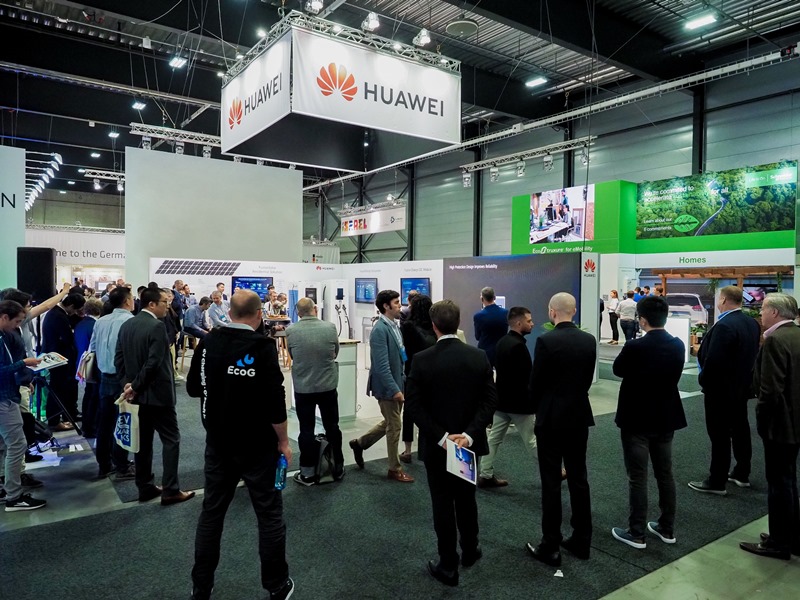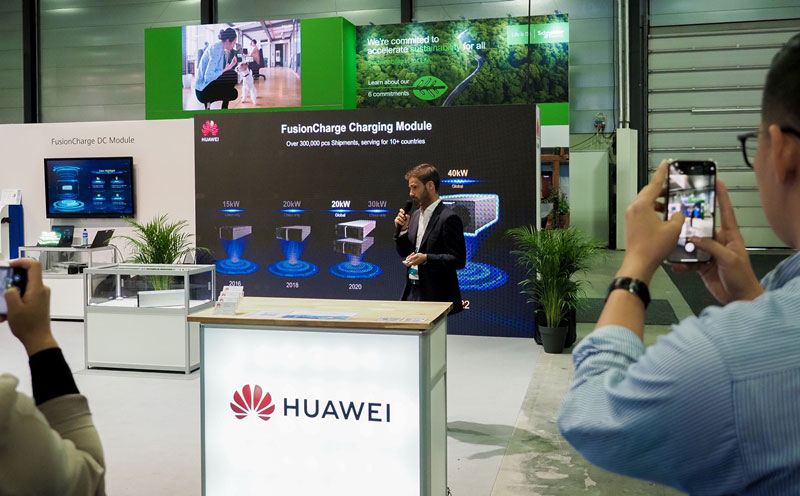 Huawei FusionCharge Debuts at the EVS35
Huawei FusionCharge Debuts at the EVS35
[Oslo, Norway, June 13, 2022] Huawei Digital Power launched its next-generation FusionCharge 40 kW DC Charging Module at the 35th International Electric Vehicle Symposium & Exhibition (EVS35). This reliable, low-noise, and highly efficient charging module is expected to become the core of electric vehicle (EV) charging facilities, so users can enjoy a better charging experience while operators and carriers save on charging facility O&M costs.

Huawei Digital Power launched its next-generation FusionCharge 40 kW DC Charging Module
The core values of Huawei FusionCharge's new-generation 40 kW DC charging module are as follows:
Reliable: The potting and isolation technologies ensure long-term reliable running in harsh environments with an annual failure rate of less than 0.2%. In addition, the product supports intelligent O&M and over the air (OTA) remote upgrade, eliminating the need for site visits.
Efficient: The product is 1% more efficient than the industry average. If a 120 kW charging pile is equipped with Huawei's charging module, about 1140 kWh of electricity can be saved each year.
Quiet: Huawei's charging module is 9 dB quieter than the industry average. When it detects reduced temperatures, the fan automatically adjusts the speed to reduce noise, making it suitable for noise-sensitive areas.
Versatile: Rated EMC Class B, the module can be deployed in residential areas. At the same time, its wide voltage range allows charging for different vehicle models (voltages).
Huawei also provides a full portfolio of charging solutions tailored for various scenarios. At the launch, Huawei showcased its all-in-one residential solution that combines PV, energy storage, and charging devices.
The transportation sector produces about 25% of the world's total carbon emissions. To curb this, electrification is critical. According to the International Energy Agency (IEA), the sales of EVs (including all-electric and plug-in hybrid vehicles) worldwide reached 6.6 million in 2021. At the same time, the EU has set an ambitious zero carbon goal by 2050, looking to discontinue fossil fuel vehicles by 2035.
Charging networks will be a key infrastructure in making EVs more accessible and mainstream. Within this context, EV users need better charging networks, available to them anywhere. In the meanwhile, charging facility operators are looking for ways to smoothly connect charging networks to the power grid. They also need safe, reliable, and efficient products to minimize the lifecycle operating costs of facilities and maximize revenues.
At the launch, Huawei Digital Power shared its vision of integrating power electronics and digital technologies to provide EV users with a better charging experience. It is also helping build greener and more efficient charging networks that can smoothly evolve to the next tier, prompting faster EV adoption.
Peng Jianhua, President of Huawei Digital Power Intelligent Charging Business, said: "In our campaign to reduce transport sector emissions, Huawei Digital Power hopes to work with industry partners and promote the upgrade of charging facilities. We provide core technologies, core modules, and integrated platform solutions of PV, storage, and charging system for a better, greener future."
Huawei Digital Power develops innovative technologies by integrating power electronics and digital technologies, using bits to manage watts. Its goal is to realize synergy between vehicles, charging facilities, and power grids.
About EVS
The EVS was founded in 1969 by the World Electric Vehicle Association (WEVA) and the EVS35 is hosted by the European Association for Electromobility (AVERE). Over more than half a century, it has developed into the most influential international event in the e-Mobility industry, showcasing the latest technologies, market dynamics, and future trends.

 Search
Search




 Search
Search


